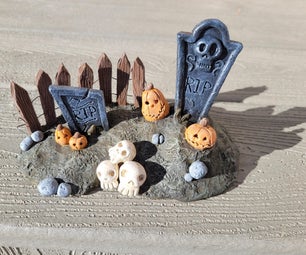Introduction: Articulated Finger Extensions
Someone in Fablab Moscow wanted aritculated finger extensions. We found many models on the web but they were 3D printed or handmade. The problem with 3D printed models is that they required too many hours of printing and the hand made ones too many hours of handcrafting.
I decided to design my own version using the laser cutter for the mechanical parts and a reduced number of 3D printed part to have ergonomic joints with the fingers.
Gloves can be added to hide the mechanism and create a different style. (scarecrows?)
Step 1: Tools and Material
Tools
- Lazer cutter
- 3D printer
- Needle-nose pliers
Material
- Plywood 3mm
- PLA filament
- Paperclips or iron wire (ø 1.1mm)
Step 2: Hand Measurement
The first problem I had was to measure my fingers. I tried with my caliper but was not able to obtain consistent measurement and when the prostheses was printed, they were too small or too large. Finally I printed slotted rings each millimeter from 15 to 23 mm diameter (parts "test"). The slots alow to remove the rings easilly.
I suggest you to print these rings and use them to measure your finger diameters: Write the first phalange diameter (proximal phalanx) and second phalange diameter (middle phalanx) on a piece of paper. Then modify the downloaded model to the desired value and print the parts (doigt2 and pha1).
Cut the other parts with the laser cutter.
Attachments
Step 3: Assembly
- Each finger has 11 parts connected with pins(except the thumb) (fig. 1)
- Each finger has 5 pins of 9 mm, 2 pins of 15 mm and 1 pin of 7 mm. Cut these pins in the paperclips(fig. 2, 3)
- Put the 9 mm pin in the claw (fig. 4, 5, 6)
- Continue the transmission chain according to the images (fig, 7, 8, 9)
- Now you can add the sides (fig. 10, 11) (the two triangles are glued)
- Add the holders on both sides with the 15 mm pins (fig. 12, 13)
- Plug the holders in the 3D printed part and connect the ring with the 7mm pin
I do not have a 3D model for the thumb, I just modified a finger to have only two phalanges. If you need one I can model the thumb.
Step 4: Optional: Gloves
If you want a more organic shape, you can hide the mechanism with a glove. I wanted to let the claws appear on the ends so I made mittens.
I look forward to seeing your costumes!

Participated in the
Halloween Contest

























